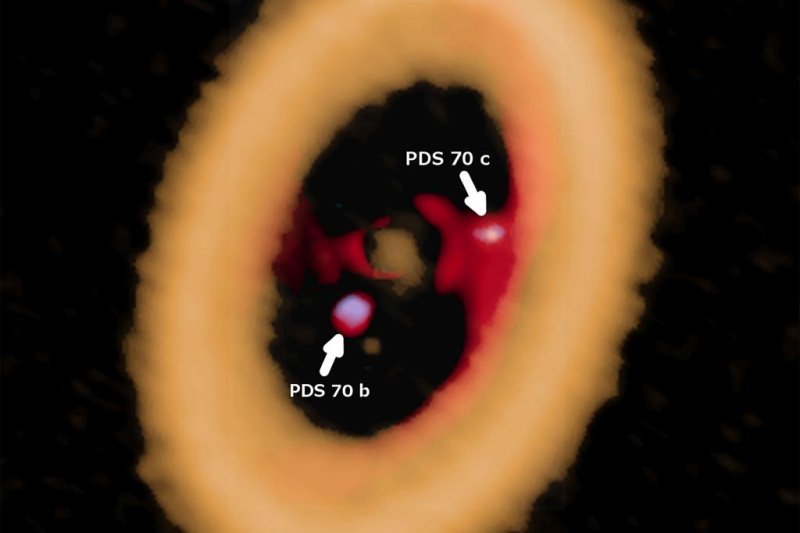Astronomers have discovered evidence of a circumplanetary disk surround a Jupiter-like exoplanet located in star system situated 370 light-years from Earth. Photo by ALMA (ESO/NAOJ/NRAO); A. Isella
July 12 (UPI) -- With the help of the ALMA observatory, scientists have identified a circumplanetary disk in a distant star system -- a first.
Astronomers found the moon-forming disk of dust and debris circling an exoplanet in orbit around PDS 70, a low-mass T Tauri star located 370 light-years from Earth. T Tauri stars are a class of young stars characterized by their optical variability.
During an earlier survey, scientists discovered two new Jupiter-like planets orbiting PDS 70 using the observational abilities of European Southern Observatory's Very Large Telescope.
For the new study, astronomers used Atacama Large Millimeter/submillimeter Array, a collection of high-precision dish antennas in northern Chile, to measure the faint radio waves emitted by the tiny gas particles surrounding the outermost body in the PDS 70 system. The observations -- described this week in the Astrophysical Journal Letters -- revealed the presence of a circumplanetary disk capable of producing multiple moons.
"For the first time, we can conclusively see the telltale signs of a circumplanetary disk, which helps to support many of the current theories of planet formation," Andrea Isella, an astronomer at Rice University, said in a news release. "By comparing our observations to the high-resolution infrared and optical images, we can clearly see that an otherwise enigmatic concentration of tiny dust particles is actually a planet-girding disk of dust, the first such feature ever conclusively observed."
Researchers were also able to spot a tail of dust trailing one of the two Jupiter-like planets. The tail is located far enough away to be considered a distinct body.
The outermost planet, the one with the circumplanetary disk, is located 3.2 billion miles from PDS 70. Analysis suggests the planet boast a mass between one and ten times that of Jupiter.
"If the planet is on the larger end of that estimate, it's quite possible there might be planet-size moons in formation around it," said Isella.
At optical wave lengths, spotting the dust surrounding exoplanets is difficult. The bright glare of the sun overwhelms the glow of the planets and their surroundings. But stars emit relatively little radiation at millimeter and submillimeter wavelengths, allowing ALMA to observe the distant solar system's more subtle details.
"This means we'll be able to come back to this system at different time periods and more easily map the orbit of the planets and the concentration of dust in the system," said Isella. "This will give us unique insights into the orbital properties of solar systems in their very earliest stages of development."















